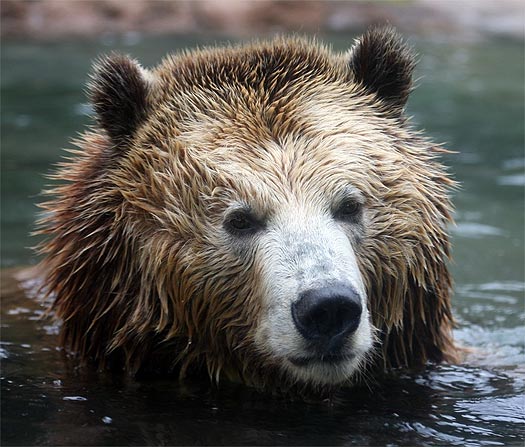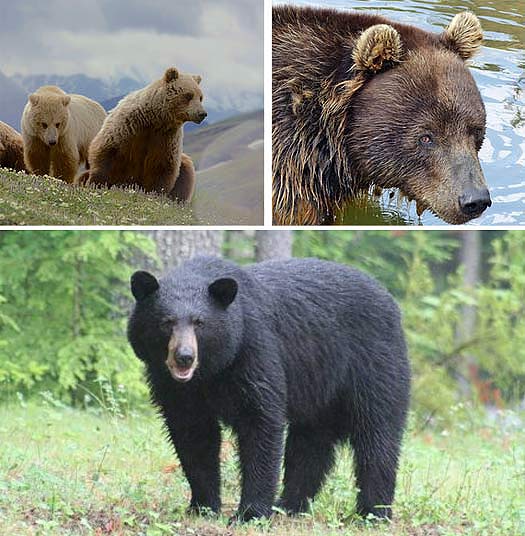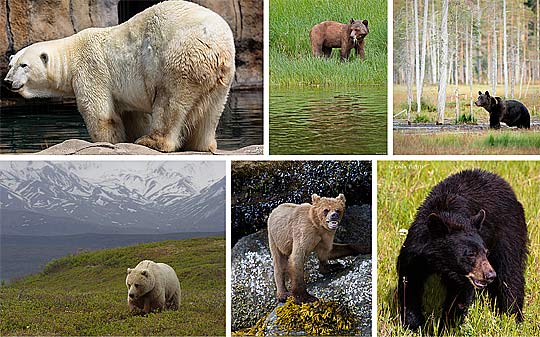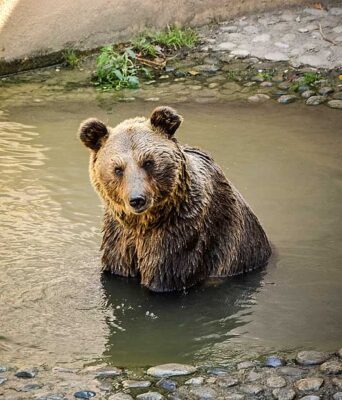Bears – Large, Omnivore, Deep-Sleepers

The seven species of bear (Ursidae) are an offshoot of dog-like ancestors strange as it seems (the resemblance is noticeable in the sun bear also known as the “dog bear”). Dogs and their relatives consume a certain amount of plant material in their largely carnivorous diet and this omnivorous habit is only more pronounced in the bears, which are adaptable consumers of a wide range of foods, including insects, grass, leaves, small vertebrates, fruit and nuts. Their teeth lack the shearing ability that cats and dogs have.
Bears are of course large and sturdily built animals with big heads, short limbs and almost no tail to speak of. They have flat, five-ted feet with long, curving claws. Only the polar bear inhabits Arctic regions, the others all live in northern regions and one lives in South America. In cold winter weather, many bears undergo a period of torpor – a deep restful state, a little short of full hibernation.


Bears are popular zoo animals, most zoos have them, but they are large and have huge territories in their natural environment. Should bears be kept in zoos? Keeping bears in zoos has been a controversial topic for many years. Some argue that zoos provide a safe and protected environment for them, and that the opportunity for people to see and learn about bears is important for conservation efforts. Others say that bears are large wild animals that should not be kept in captivity. That zoos do not provide the large, natural habitats that bears need to live healthy lives. Zoos may have very different resources they can use to provide space for their animals. Bears that are kept in some zoos might be provided with a diet and living conditions that closely mimic their natural habitat as much as possible. However, in other zoos the enclosures might be smaller and the staff might not be able to fulfill all their needs. Many zoos also participate in conservation and breeding programs for endangered bear species, such as the panda, in an effort to help preserve these animals in the wild.

